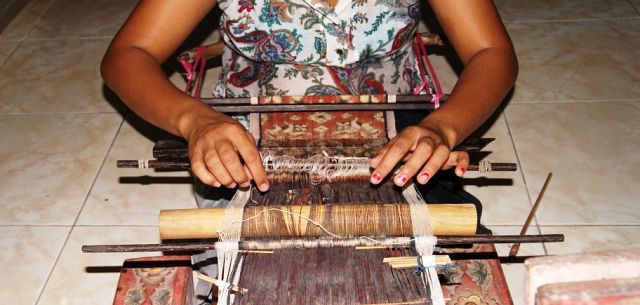
Most likely, no tourist leaves the island without buying a sarong. Incredibly versatile, it comes in handy in various situations. However, there is a significant difference between what is sold to tourists on every corner in Kuta and what the Balinese themselves wear daily. Balinese prefer to buy sarongs from the craftsmen in Tenganan. Some of their works are genuine pieces of art.
While most tourists have heard of batik - a method of fabric painting using wax, the incredibly complex process of applying paint and meticulous hand-painting require full dedication and high craftsmanship.
Unique handcrafted textile production like "double ikat" can't be found anywhere else in Indonesia.
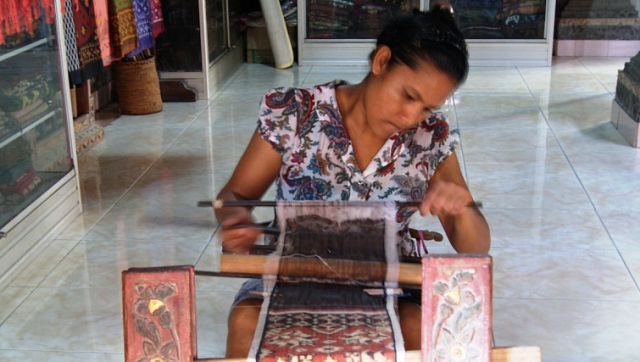
Weaving double ikat is much more challenging, making it one of the rarest types of textiles in Bali. Threads of the warp and weft are dyed separately before weaving intricate patterns. This method requires precise control of thread tension. To witness or purchase double ikat, you'll need to head southeast to the village of Tenganan. It's the only place in Indonesia where double ikat is produced.
Getting to Tenganan
Tenganan is one of the very few villages on Bali that never submitted to Hindu rulers from Java. One traveler in the 1930s described this village as "extremely conservative." Its residents never embraced the Hindu caste system, continuing their centuries-old customs.
To reach Tenganan, you need to get to Candidasa and continue north for another 4 kilometers on a dirt road, mostly through the jungle.
Local residents still grow cotton for their fabrics. The village homes are made of stone and clay; cement is a foreign concept here. Streets are tranquil, only chickens leisurely roam from house to house. Tourists are a rare sight, and for the locals, a foreigner is a grand event not to be missed.
The village, as expected, has several temples. One of them suffered from an earthquake, and the regional administration allocated funds for its restoration. Modern cement, instead of traditional clay, was used during the renovation. There is also an underground channel and a water tower providing the village with water. One of the few signs of modernity is separate garbage containers for plastic and organic waste. Otherwise, the village looks very authentic and serene.
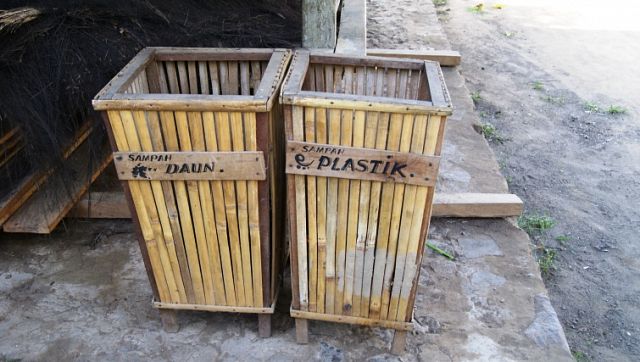
Tenganan is a relatively large village. About two centuries ago, it was divided into two banjars, as proudly mentioned by the locals. Mostly, Aga people live here – the first settlers on Bali who strive to remain independent, preserving their culture and traditions. "We've never been in conflict with other people," says one of the local residents, although it's evident they were ready to defend against Majapahit soldiers, who conquered most of the island in the 14th century.
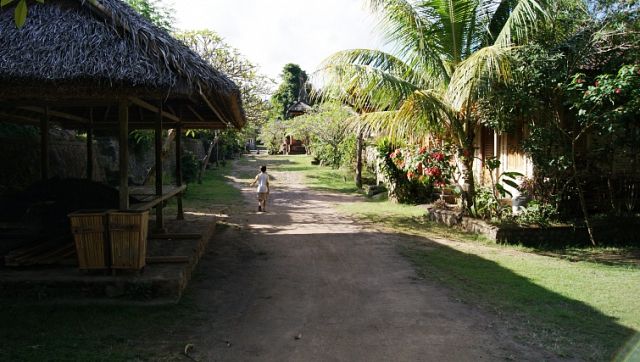
Here, you can visit a traditional house and observe how masters weave their masterpieces. Like any craft, there are secrets and methods involved. First, cotton is meticulously cleaned from impurities and husks and spun into threads. Part of them is dyed in different colors, while some are left natural. Then, threads are tied on a loom to form a specific color sequence. Gradually, the envisioned pattern is woven. The entire process is accompanied by rituals and ceremonies.
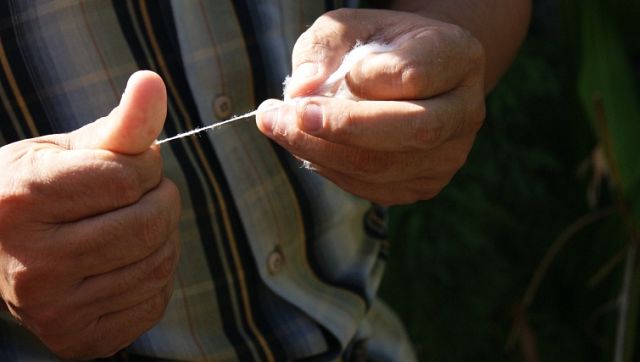
Very few women can create double ikat nowadays. It is woven by adjusting the tension of the warp threads using a special loom. Sitting on the floor, the craftswoman guides the thread between the long threads in front of her. These long warp threads are also attached to a device behind her, allowing her to control the tension by leaning back with more or less pressure. She regulates the tension of the warp or "weft," pulling the shuttle more or less tightly after threading the thread in each direction.
The whole process is very labor-intensive and can take about a year from start to finish. Therefore, double ikat is quite expensive. Recently, a German collector purchased an antique cloth for seven million rupiahs. It was a relatively old fabric with repairs in several places.
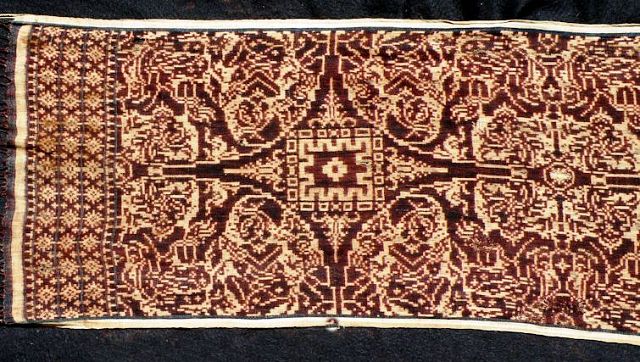
Pricing and Traditions in Tenganan Village
Prices for the works of the craftswomen start at two million rupiahs. While not cheap, true connoisseurs of weaving art argue that it's quite reasonable for work of such caliber. The simpler the fabric pattern, the lower the price.
In Tenganan village, they also craft lontars – scrolls made from palm leaves traditionally used for Balinese and Indian documents. Symbols are carved on long strips of palm leaves using a knife and then painted with regular soot. Original Hindu scriptures like the Upanishads were recorded on lontars. Ancient Balinese kings also employed this writing method.
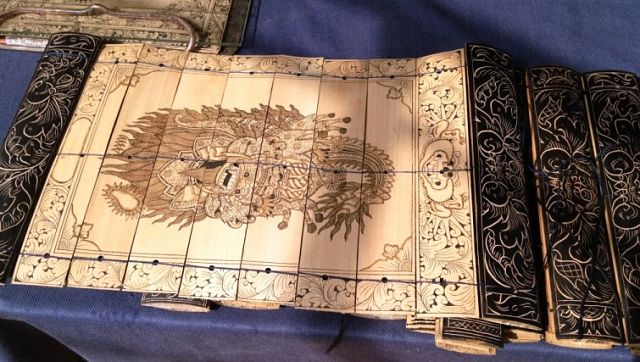
Tourists rarely visit Tenganan village. Almost none of them have heard about this village even after 5-10 visits to the island. It's away from tourist trails, but it's precisely in such places that you find the most interesting things.
The future of masters who weave double ikat is highly uncertain. Some looms and structures are no longer made, and knowledge is fading with the masters. Only a few women in the village today possess the art of double ikat weaving. The modern world and financial dynamics have pushed small workshops to the sidelines. Nowadays, masters of this ancient art have to preserve their knowledge against the tide of globalization. Besides Bali, knowledge of the double ikat weaving technique is preserved in only three places globally – two in India (Gujarat and Telangana) and one in Japan (Okinawa). On eBay auctions, you can acquire double ikat for 750-3500 Australian dollars.
To enter the village, a donation of any amount is sufficient.
You can add one right now!